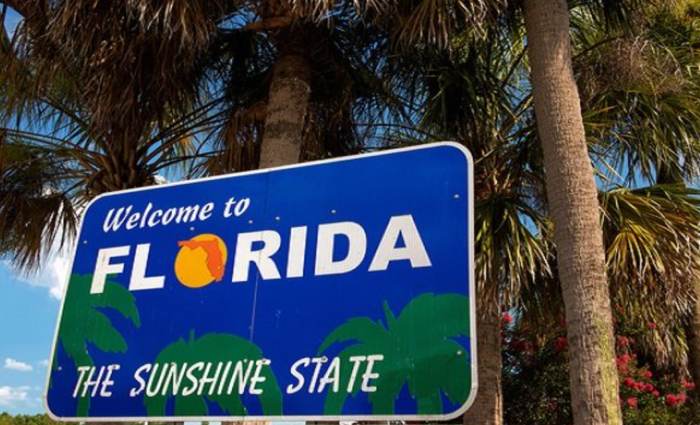Man-made property catastrophe insurance crises engulfing coastal states: report

U.S. coastal states such as Florida, California, and Louisiana are experiencing a growing property insurance crisis that is being driven by man-made events, highlighting the need for reinsurance capital to absorb more of the risk as carriers navigate a testing environment.
A new paper from the American Property Casualty Insurance Association (APCIA), the Reinsurance Association of America (RAA), the Association of Bermuda Insurers and Reinsurers (ABIR), and Robert Hartwig, PhD, CPCU, examines how three decades after Hurricane Andrew hit Florida, coastal states in parts of the U.S. are facing new, major crises from man-made events.
Specifically, the report focuses on legal system abuse, government interference, and fraud, which are having a detrimental impact on both the availability and affordability of insurance protection in the country and, at the same time, contributing to the pull-back from the property catastrophe space by reinsurance firms in the face of heightened volatility and rising loss costs.
“Hurricane Andrew forever changed the way American communities prepared for natural disasters,” said Hartwig, clinical associate professor of finance and director of Risk and Uncertainty Management Center at the University of South Carolina.
“At the time, it was the costliest natural disaster in the United States with an estimated $27.3 billion in insured losses. In its aftermath, communities and states ultimately instituted stronger building codes and provided more investment in resiliency – both of which have undoubtedly saved countless lives,” he added.
But while resilience has improved, David Sampson, President and CEO of the APCIA, warns that 30 years after the destruction caused by Hurricane Andrew, a new, major and man-made catastrophe is occurring in certain states, notably Florida, California, and Louisiana.
“Unchecked plaintiff bar tactics, legal system abuse, fraud, and misguided government policies are having a significant impact on the availability and affordability of insurance for American families, individuals, and businesses. For example, collectively these factors have driven the average Florida homeowner’s insurance policy to nearly $3,000 in 2022, roughly twice the U.S. annual average,” said Sampson.
It’s important to remember that this rise in costs for consumers has occurred despite the State of Florida not taking a direct hit from a hurricane since 2018, which Frank Nutter, President of the RAA, says underscores “the impact of disruptions these man-made forces have on the marketplace.”
Nutter goes on to highlight the fact seven insurance companies have gone insolvent in the last two years, with another 14 carriers deciding to cease underwriting new policies in an effort to avoid the same fate.
Highlighting just how challenging the current litigation trend is in Florida, Nutter points to a report from the Florida insurance regulator, which says that the state accounted for 79% of the country’s homeowners’ insurance claim lawsuits, but only accounts for 9% of the nation’s homeowners’ insurance claims.
In fact, the Florida Office of Insurance Regulation finds that, over the past decade, $51 billion has been paid out in insurance claims, and, of that total, a significant 71% went to attorney fees and public adjusters, with just 8% going to claimants.
Of course, a special session earlier this year hopes to reform the Florida property insurance marketplace. But while Nutter feels that these efforts are a step in the right direction, like others, he notes that “it will take time and additional reforms to stabilize Florida’s volatile property insurance market.”
Exacerbating the situation for insurers in places like Florida, is the fact reinsurance capital is now far more reluctant to participate in the state, especially for lower layers of programs. This is due to the recent catastrophe experience in the state, but also the fact social inflation and litigation trends are driving up loss costs, which has seen some reinsurers withdraw from the space entirely, while others have dramatically cut their exposure.
The trouble is, there’s a real need for reinsurance capital to help absorb more of the risk, and, importantly, the pricing needs to adequately reflect the risk.
But as reinsurance rates rise, affordability can become an issue for some primary players, which, coupled with availability issues, has seen some unable to procure their desired level of protection at the recent renewals.
Expanding on some of the challenges facing insurers in coastal states, John Huff, President and CEO of the ABIR, commented, “Insurers are also facing increasing challenges in managing risk due to government mandates and interference. Insurers must be given flexibility to collect adequate premiums reflective of the exposure. When the private market is allowed to function in this way with less volatility and counterproductive constraints, this leads to increased competition and ultimately greater consumer choice.”
Nutter added, “Fraud related to property insurance claims is another issue that costs policyholders and impacts the marketplace. According to data from the Federal Bureau of Investigation, the cost of non-health-related insurance fraud is estimated to be more than $40 billion per year, which can translate to an additional $400 to $700 annually in insurance premiums for the average U.S. family.
“Insurers are an essential part of society as they provide the financial protection needed to help families, businesses, and communities prepare for—and recover from—the unexpected,” said Sampson. “As natural disasters continue to increase in frequency and severity due to climate change, state leaders need to act on policies that will help create a healthy and sustainable insurance marketplace so that consumers can continue to protect the things that matter most to them. Because that’s what matters most to us.
“To fix broken property insurance markets in states like Florida, California, and Louisiana, insurers and reinsurers urge state lawmakers and regulators to focus on addressing the underlying issues roiling markets and harming consumers, including implementing legal system reforms and anti-fraud measures, as well as promoting regulatory stability and disaster mitigation to help reduce future losses.”
——————————————————————— Tickets are selling fast for Artemis London 2022, our first ILS conference in London. Sept 6th, 2022.
Tickets are selling fast for Artemis London 2022, our first ILS conference in London. Sept 6th, 2022.
Register soon to ensure you can attend.
Secure your place at the event here!
—————————————






